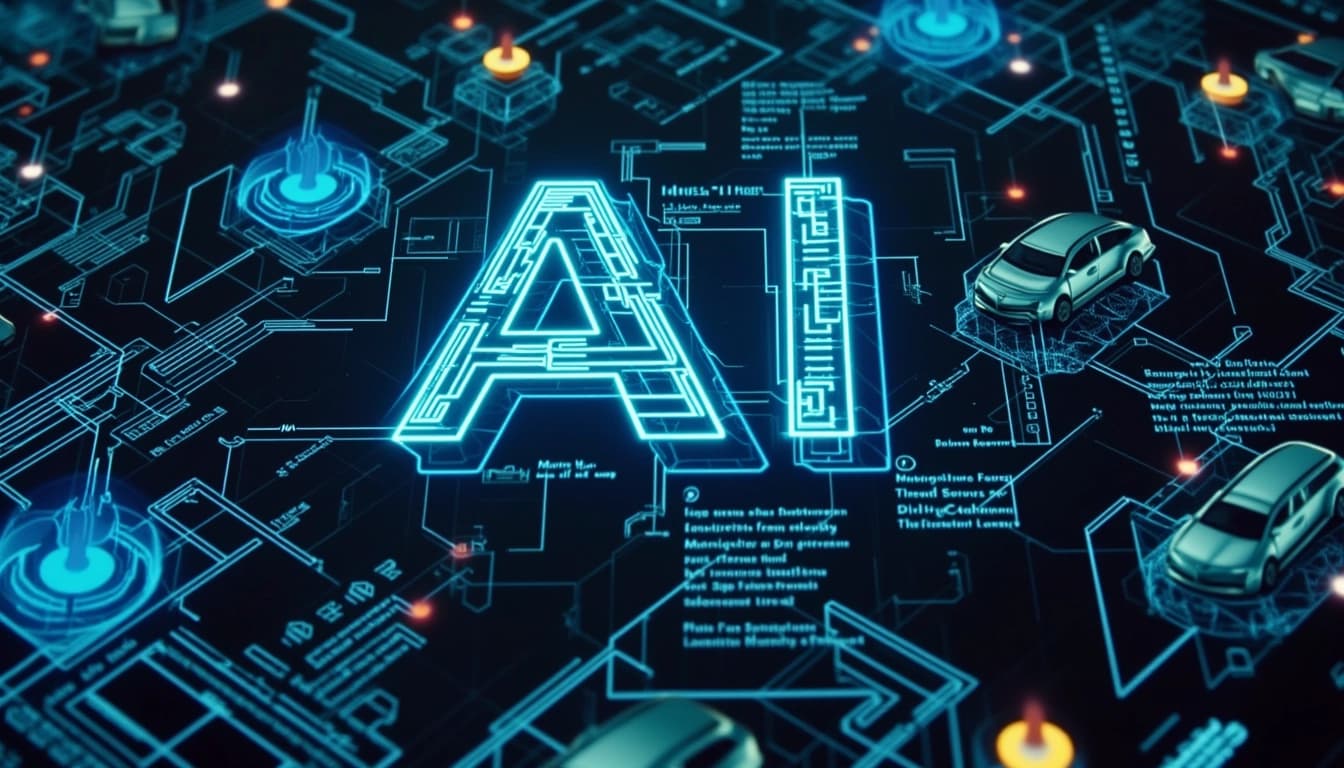
Key Points on AI Semantic Understanding
By John Doe 5 min
Key Points
Research suggests AI models interpret meaning by learning patterns from large datasets, especially in language tasks.
It seems likely that modern models, like BERT and GPT, use context and word relationships to understand semantics.
The evidence leans toward deep learning techniques, such as transformers, being key to capturing meaning, but challenges remain in handling ambiguity and common sense.
Introduction to Semantic Understanding in AI
AI models, particularly in natural language processing (NLP), are designed to interpret meaning by analyzing text and context. This ability, known as semantic understanding, allows them to go beyond simple word recognition to grasp the intent and nuances of language. For example, understanding that "bank" can mean a financial institution or a riverbank depending on context is crucial for tasks like question answering or chatbots.
How Models Learn to Interpret Meaning
AI models, especially language models, are trained on vast amounts of text data, such as books and articles, to predict the next word in a sequence. This process helps them learn semantic relationships. Early models used techniques like word embeddings (e.g., Word2Vec, GloVe) to represent words as vectors, where semantically similar words are closer together. Modern models, like BERT ([Introduction to Large Language Models](https://developers.google.com/machine-learning/resources/intro-llms)) and GPT, use transformers, which attend to different parts of the input to understand context better, enabling them to interpret meaning in sentences and paragraphs.
Applications and Examples
These models interpret meaning in various applications, such as improving search results with BERT in Google Search ([Language Models, Explained](https://www.altexsoft.com/blog/language-models-gpt/)) or answering questions by understanding the query's intent. For instance, a model might interpret "What’s the weather like?" to provide current conditions.
Semantic understanding in AI refers to the ability of models to interpret the meaning of data, particularly in natural language, images, and other modalities, beyond mere syntactic analysis. This capability is crucial for enabling machines to perform tasks like question answering, sentiment analysis, and machine translation, mimicking human-like comprehension.
For instance, understanding that 'bank' can mean a financial institution or a riverbank depending on context is essential for accurate communication. The importance lies in enhancing user interactions, improving search relevance, and supporting decision-making in industries like healthcare and finance.
Historical Context: Early Approaches
Early AI approaches to semantic understanding included rule-based systems and expert systems, which relied on predefined rules and symbolic representations. For example, semantic networks, knowledge bases representing concepts and their relations, were used in neurolinguistics and NLP for tasks like semantic parsing.
However, these methods struggled with scalability and handling the complexity of natural language, especially in ambiguous or context-dependent scenarios. The shift to statistical and machine learning approaches marked a significant evolution in semantic understanding.
Modern Techniques in Semantic Understanding
Modern AI models, such as large language models (LLMs), leverage deep learning to capture semantic relationships through vast amounts of training data. These models use techniques like attention mechanisms and transformers to process and generate human-like text, enabling more nuanced understanding.
For example, models like GPT-4 can infer meaning from context, answer complex questions, and even generate coherent and contextually relevant text. This represents a significant leap from earlier rule-based systems, allowing for more flexible and scalable semantic processing.
Challenges and Limitations
While impressive, AI models still face challenges in semantic understanding. Ambiguity in language, such as distinguishing between different meanings of a word or phrase, remains a significant hurdle. Additionally, models often lack common sense reasoning, which humans use to interpret meaning effortlessly.
For instance, understanding that 'fruit doesn’t fly' requires common sense knowledge that isn't explicitly stated in the text. Ongoing research explores integrating knowledge graphs and multimodal learning to address these gaps and improve semantic understanding.
Conclusion & Next Steps
Semantic understanding is a cornerstone of advanced AI systems, enabling them to interact with humans more naturally and effectively. While significant progress has been made, challenges like ambiguity and common sense reasoning persist.
Future research will likely focus on combining symbolic and subsymbolic approaches, leveraging multimodal data, and improving contextual understanding to bridge these gaps. The continued evolution of semantic understanding will be key to unlocking more sophisticated AI applications.
- Semantic understanding enables AI to interpret meaning beyond syntax.
- Early approaches relied on rule-based systems but faced scalability issues.
- Modern models like GPT-4 use deep learning for nuanced understanding.
- Challenges include ambiguity and lack of common sense reasoning.
- Future research aims to integrate knowledge graphs and multimodal learning.
Language models have evolved significantly over the years, starting from simple n-gram models to sophisticated deep learning architectures. Early models relied on statistical methods to predict the next word based on the frequency of word sequences, but they struggled with understanding context and meaning.
Early Approaches: N-gram Models
N-gram models were among the first attempts to create language models, using fixed sequences of words to predict the next word. While effective for simple tasks, these models lacked the ability to generalize or understand context beyond the immediate word sequence. For example, they couldn't handle synonyms or context-dependent scenarios, limiting their effectiveness in real-world applications.
Evolution to Machine Learning and Deep Learning
The shift to machine learning, particularly deep learning, marked a significant advancement. Word embeddings, such as Word2Vec and GloVe, introduced in the 2000s, represented words as real-valued vectors, capturing semantic relationships by placing similar-meaning words closer in vector space. For example, 'king' and 'queen' might be close, reflecting their semantic similarity. This approach improved over discrete n-gram models by addressing data sparsity through continuous representations.
Modern Models: Contextualized Understanding
Modern models, like ELMo, BERT, and GPT, leverage transformers, introduced in a 2017 Google paper, to capture context dynamically. These models are trained on vast datasets, such as Wikipedia, to predict the next word or mask words, requiring them to understand context. BERT, for instance, is bidirectional, processing text left to right and right to left, enhancing its ability to interpret meaning in context. This is evident in applications like Google Search, where BERT improves query relevance by understanding intent.
Mechanisms of Meaning Interpretation
Language models interpret meaning by learning patterns from training data, encoding semantics in vector representations. The transformer architecture uses an attention mechanism to focus on relevant parts of the input, enabling the model to understand long-term dependencies and context. For example, in 'The cat, which was sleeping, woke up,' the model uses attention to link 'cat' with 'woke up,' interpreting the sentence's meaning.
https://www.altexsoft.com/blog/language-models-gpt/Semantic understanding in AI refers to the ability of models to comprehend the meaning behind words, sentences, or even entire documents. This goes beyond mere pattern recognition, enabling AI to grasp context, intent, and nuances in language. For example, large language models (LLMs) like GPT-3 or BERT analyze word relationships to infer meaning, allowing them to generate human-like text or answer questions accurately.
How AI Models Learn Semantics
AI models learn semantics through training on vast datasets, where they identify patterns and relationships between words. Techniques like word embeddings (e.g., Word2Vec) and transformer architectures (e.g., BERT) map words into high-dimensional vectors, capturing semantic similarities. For instance, 'king' and 'queen' might be closer in vector space due to their shared royal context, while 'apple' and 'orange' are grouped as fruits. This quantitative representation enables models to perform tasks like sentiment analysis or question answering by interpreting underlying meaning.
Word Embeddings and Context
Word embeddings transform words into numerical vectors, preserving semantic relationships. Contextual models like BERT go further by considering surrounding words, allowing them to distinguish between homonyms (e.g., 'bank' as a financial institution vs. a riverbank). This contextual awareness is critical for tasks like machine translation, where the same word may have different meanings depending on usage.
Extending Beyond Language: Multimodal Models
Semantic understanding isn't limited to text. In computer vision, convolutional neural networks (CNNs) learn visual semantics, such as recognizing objects or scenes in images. Multimodal models combine text and image processing, enabling applications like generating captions for photos or answering questions about visual content. For example, a model might describe an image as 'a sunny beach with palm trees,' demonstrating its ability to interpret and articulate visual meaning.
Applications and Real-World Examples

AI's semantic capabilities power diverse applications. Chatbots use it to understand user queries and provide relevant responses, while search engines leverage it to interpret search intent and deliver accurate results. In healthcare, AI models analyze medical texts to extract diagnoses or treatment recommendations. These examples highlight how semantic understanding enhances AI's utility across industries.
Challenges and Limitations
Despite progress, AI models still struggle with true semantic understanding. Ambiguities in language (e.g., sarcasm or idioms) and lack of common sense reasoning remain hurdles. For instance, a model might misinterpret 'break a leg' as literal rather than a wish for good luck. Addressing these limitations requires advances in contextual reasoning and world knowledge integration.
Conclusion & Next Steps
Semantic understanding is a cornerstone of modern AI, enabling machines to interact with humans more naturally. While challenges persist, ongoing research in multimodal learning and contextual reasoning promises to bridge gaps. Future directions include integrating real-world knowledge and improving cross-domain semantic transfer, paving the way for more intuitive AI systems.

- Semantic AI enhances human-machine interaction.
- Multimodal models extend semantics beyond text.
- Challenges include ambiguity and common sense gaps.
Semantic understanding in AI involves interpreting the meaning behind words and sentences, enabling machines to comprehend context, intent, and relationships between entities. This field has evolved from early rule-based systems to modern deep learning models, which leverage vast datasets to capture nuanced linguistic patterns.
Historical Context and Evolution
Early approaches to semantic understanding relied on symbolic methods, such as semantic networks and ontologies, which manually encoded relationships between concepts. These systems were limited by their rigidity and inability to scale. The advent of statistical models, like n-grams and latent semantic analysis (LSA), introduced data-driven techniques but still struggled with ambiguity and context.
The Rise of Neural Networks
With the emergence of neural networks, particularly word embeddings like Word2Vec and GloVe, AI systems began capturing semantic relationships more effectively. These models represented words as dense vectors in a continuous space, allowing for analogical reasoning and better handling of synonyms and polysemy.
Modern Approaches and Challenges
Today, transformer-based models like BERT and GPT-4 have revolutionized semantic understanding by leveraging attention mechanisms and large-scale pretraining. These models excel at tasks like question answering and summarization but face challenges such as hallucination and bias. For instance, they may generate plausible but incorrect answers due to over-reliance on training data patterns.
Future Directions and Research
Researchers are exploring hybrid approaches, such as neuro-symbolic AI, to combine the strengths of neural networks and symbolic reasoning. Knowledge graphs and multimodal learning are also promising avenues, enabling AI to integrate visual and textual data for richer semantic understanding. These advancements aim to bridge the gap between machine and human-like comprehension.
Conclusion & Next Steps
Semantic understanding remains a dynamic field, with ongoing innovations addressing its limitations. Future work will likely focus on improving interpretability, reducing bias, and enhancing cross-modal integration. As AI systems become more sophisticated, their ability to understand and generate human-like meaning will continue to expand.

- Explore hybrid neuro-symbolic models
- Investigate bias mitigation techniques
- Expand multimodal training datasets
Semantic understanding in AI refers to the ability of machines to comprehend the meaning behind words, sentences, and larger texts, rather than just processing them as sequences of characters or tokens. This involves interpreting context, nuances, and the relationships between words to derive intent and significance. Over the years, advancements in natural language processing (NLP) have significantly improved AI's capability to understand semantics, moving from simple keyword matching to sophisticated models that can grasp subtleties like sarcasm, idioms, and cultural references.
Evolution of Semantic Understanding in AI
The journey of semantic understanding in AI has evolved from early rule-based systems to modern deep learning models. Initially, systems relied on predefined rules and dictionaries to interpret text, which limited their ability to handle ambiguity or context. The introduction of statistical methods and machine learning allowed models to learn patterns from data, improving their semantic capabilities. Today, transformer-based models like BERT and GPT leverage vast amounts of text data and self-attention mechanisms to achieve near-human levels of comprehension in many tasks.
Key Milestones in Semantic AI
Significant milestones include the development of Word2Vec, which introduced word embeddings to capture semantic relationships, and the advent of transformers, which revolutionized context-aware understanding. Models like BERT (Bidirectional Encoder Representations from Transformers) and GPT (Generative Pre-trained Transformer) have set new benchmarks by processing text bidirectionally or autoregressively, respectively. These advancements have enabled applications like chatbots, sentiment analysis, and automated summarization to perform with remarkable accuracy.
Challenges in Semantic Understanding
Despite progress, challenges remain in achieving true semantic understanding. Ambiguity in language, such as homonyms or polysemous words, can confuse even advanced models. Additionally, AI often struggles with commonsense reasoning and interpreting implicit meaning, which humans handle effortlessly. Cultural and contextual nuances further complicate matters, as models may lack the real-world experience to fully grasp subtleties like irony or regional dialects.
Applications of Semantic AI
Semantic understanding powers a wide range of applications, from virtual assistants like Siri and Alexa to advanced search engines that interpret user intent. In healthcare, AI models analyze medical texts to assist in diagnosis, while in customer service, they enable more natural and effective interactions. Content recommendation systems also rely on semantic analysis to suggest relevant articles, videos, or products based on user preferences and behavior.
Future Directions
Future research aims to bridge the gap between human and machine understanding by integrating multimodal data (text, images, audio) and leveraging knowledge graphs for better context. Efforts are also underway to make models more efficient and less data-hungry, reducing their environmental impact. As AI continues to evolve, the goal is to achieve not just semantic but pragmatic understanding, where machines can infer intent and act appropriately in real-world scenarios.
Conclusion
Semantic understanding is a cornerstone of modern AI, enabling machines to interact with humans more naturally and effectively. While significant strides have been made, ongoing challenges highlight the complexity of human language. By addressing these limitations and exploring new methodologies, the future of semantic AI promises even greater integration into daily life, transforming how we communicate with technology.
- Semantic AI interprets meaning beyond keywords.
- Transformer models like BERT and GPT are state-of-the-art.
- Challenges include ambiguity and commonsense reasoning.
- Applications span healthcare, customer service, and more.
Large Language Models (LLMs) have revolutionized the field of artificial intelligence, enabling machines to understand and generate human-like text. These models, such as GPT-3 and BERT, are trained on vast amounts of data to comprehend context, semantics, and even nuances in language.
Understanding Semantic Networks
Semantic networks are a way to represent knowledge through interconnected nodes and edges, where nodes represent concepts and edges represent relationships between them. This structure is fundamental in AI for tasks like natural language processing (NLP) and knowledge representation.
How Semantic Networks Enhance AI
By leveraging semantic networks, AI systems can better understand context and relationships between words or concepts. This leads to more accurate language models and improved performance in tasks like question answering and text summarization.
Semantic Analysis in NLP

Semantic analysis involves extracting meaning from text by analyzing word relationships, context, and syntax. Techniques like word embeddings and neural networks help machines understand the deeper meaning behind sentences, improving applications like chatbots and search engines.
The Role of Semantic AI
Semantic AI combines traditional AI with semantic technologies to create systems that understand and reason with human-like comprehension. This approach is used in industries like healthcare, finance, and customer service to automate complex tasks and provide intelligent insights.
Conclusion & Next Steps
The integration of semantic networks and AI has opened new possibilities for understanding and processing human language. Future advancements will likely focus on improving model interpretability and expanding applications across diverse domains.
- Semantic networks improve knowledge representation.
- LLMs leverage semantics for better language understanding.
- Semantic AI is transforming industries with intelligent automation.